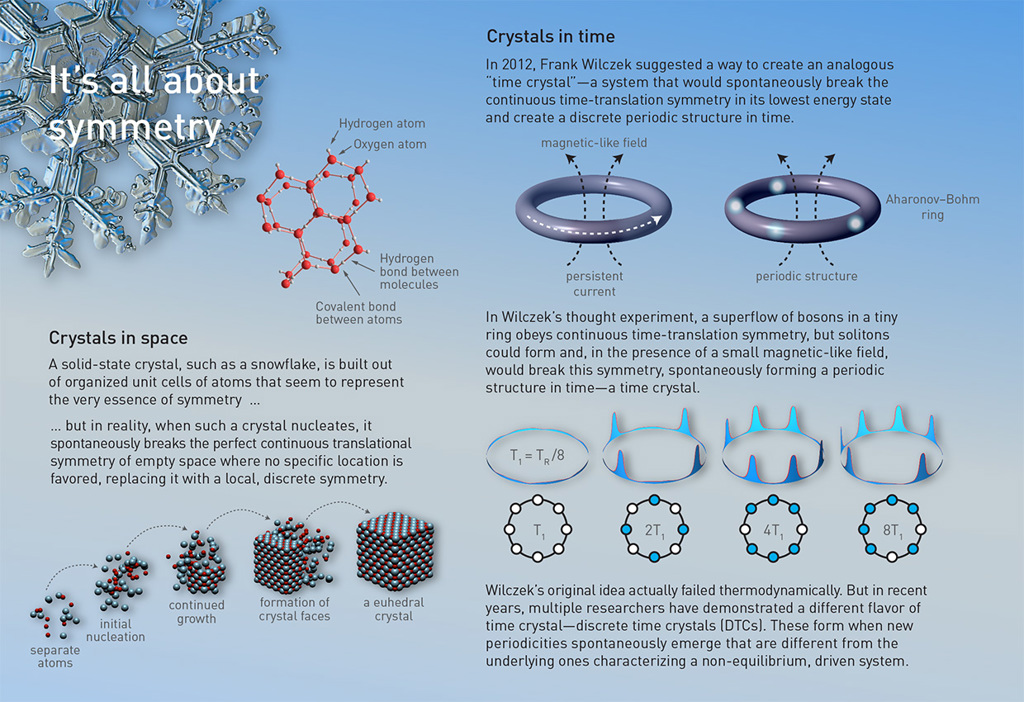Exploring the latest technological innovations in time crystals
October 12, 2023

A paper published in the July/August 2022 Optics and Photonic News focuses on the latest developments in Time Crystals and highlights the demonstration of Discrete Time Crystals with photons. The paper’s authors include Hossein Taheri of UC Riverside, Andrey Matsko of JPL, Lute Maleki of OEwaves, and Krzysztof Sacha of Jagiellonian University, Poland.

Time crystals represent a groundbreaking concept in physics, where symmetry-breaking occurs in the temporal domain rather than the spatial one. Unlike traditional crystals, which break continuous space symmetry, time crystals spontaneously break time-translation symmetry, creating periodic structures in time. This fascinating phenomenon has primarily been confined to theoretical research and lab experiments—until now. Researchers, including Hossein Taheri, Andrey Matsko, and Lute Maleki, demonstrated an all-optical dissipative discrete time crystal using a high-Q magnesium fluoride whispering-gallery-mode cavity driven by two independent lasers. This innovative system, operating at room temperature, generated coherent optical frequency combs with repetition rates smaller than the driving frequencies, achieving robust time-crystalline behavior with theoretically infinite lifetimes—a substantial improvement over previous systems, which were limited to only hundreds of driving cycles.
OEwaves' technology played a pivotal role in this breakthrough, providing the experimental platform that overcame the critical limitations of prior approaches. The high-Q magnesium fluoride whispering-gallery-mode cavity allowed the first room-temperature time crystal demonstration with lifetimes far surpassing earlier models. Developed by Lute Maleki and his team at OEwaves, this system eliminated the need for elaborate cooling equipment or exotic materials, making time crystal research more accessible and practical. Unlike previous implementations constrained to simple period-doubling behaviors, OEwaves' technology enabled the creation of "big" discrete time crystals with longer periodicities than the driving period. This marks a significant leap forward, opening new avenues for exploring temporal analogs of complex condensed-matter phenomena, and brings time crystals closer to potential applications in frequency division, precision timekeeping, and quantum information processing.